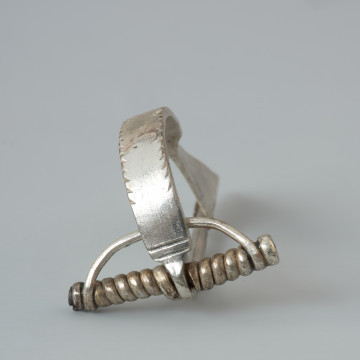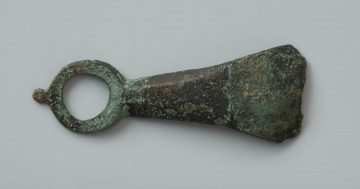
Chest
1796
National Museum in Szczecin
Part of the collection: Antiquity
The bronze heel-band spur was found during ploughing, together with another bronze spur, three bronze fibulae, a round buckle, and a pottery vessel. These items probably came from the devastated cremation graves with stone pavements. The exhibited item is an interesting stylistic hybrid of two different spur design types used during the Roman period. The first represents a heel-band type used mainly in the western part of the Barbaricum, outside the Roman Empire, with a rowel and a heel-band for mounting on foot. The other was a type of spur manufactured by Western Germanic tribes. This type does not have a heel-band, and the rowel is mounted on a plate - similar to the specimen from Obliwice. The plate has rivet holes used to attach straps for mounting on foot. It is believed that some of the decorative spurs were riveted directly to the shoes. The spur ought to be dated to the 1st-2nd centuries and associated with the Wielbark culture. This culture was represented by the Goths, which were migrating from Scandinavia and settled in the Pomerania region at the beginning of the 1st century. Gothic tribes were distinguished by their dynamic territorial expansion on their way to the Black Sea, which they managed to reach in the 3rd century. On the Polish territory, the movement of the Wielbark culture population can be divided into a couple of stages. One of the results of their migration was the establishment of trade contacts between the tribes inhabiting the areas from the Baltic Sea to the Black Sea.
Monika Witek
Author / creator
Dimensions
cały obiekt: height: 5.1 cm, width: 6 cm
Object type
spur
Technique
casting
Material
bronze
Creation / finding place
Owner
Muzeum Narodowe w Szczecinie
Identification number
Location / status

1796
National Museum in Szczecin

National Museum in Szczecin

National Museum in Szczecin
DISCOVER this TOPIC
National Museum in Lublin
DISCOVER this PATH
Educational path